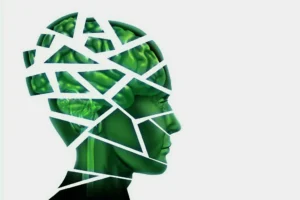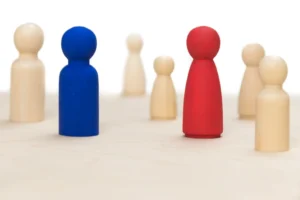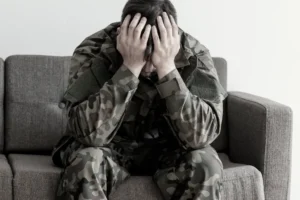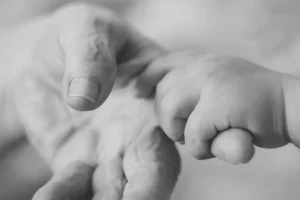Do you suffer from an overactive inner critic or do you have unproductive or self-defeating behaviours that you would like to change? Do you suffer from inner conflicts?
Perhaps the key to change lies in understanding that we have parts or sub-personalities, which drive such behaviours. In this article you will learn what types of parts / sub-personalities exist and how to work with them to release trauma and facilitate personal transformation.
What are Parts / Sub-personalities?
Inner parts refer to distinct aspects of our psyche that shape our thoughts, emotions, and behaviors. These parts can be seen as subpersonalities. They are distinct characters within us, each with its own unique perspective, desires and needs as well as emotions, thoughts and behaviours.
Having different parts of our personality is normal and healthy – it allows us to operate effectively in different roles and contexts and be flexible. However as a result of unprocessed trauma they can become inflexible or develop problematic behaviours. As a result of trauma there may be a dynamic, where certain emotions or experiences are avoided and certain behaviours are used as inflexible defences or coping mechanisms.
Furthermore there may be conflicts between different parts. While one part likes do go into one direction there may be other parts who do not like this behaviour – they then act as an opponent or inner critic.
Having different parts of our personality is a normal and healthy – However, unresolved trauma can lead to problematic parts.
Symptoms of Problematic Parts
When an inner part becomes active it may temporarily dominate our thoughts, emotions, and actions and kind of take over our experience. This can manifest through various symptoms, including unwanted behaviours, self-sabotaging behaviours, internal conflicts, recurring patterns and intense emotional reactions.
- If there is unwanted behaviour there is kind of a sequential conflict within us – i.e. one part drives the bevaviour and another part (an inner critic) criticises us afterwards.
- For example, the “inner critic” part, when active, can lead to self-doubt, harsh self-judgment, and a constant need for perfection. This critical inner voice can significantly impact our self-esteem and inhibit our ability to embrace vulnerability and take risks.
- Self-sabotage refers to behaviours and actions that undermine our own well-being or success. When a part carries unresolved pain or negative beliefs, it may engage in self-sabotaging patterns such as procrastination or self-destructive behaviours or undermine our achievements.
- Other Internal conflicts arise when different parts of us simultaneously hold opposing beliefs, desires, or perspectives.
- These conflicts can create a sense of inner turmoil and indecisiveness, they can create contradictory emotions and make it challenging to find a harmonious balance.
- For example, one part might be driven by the desire for security and stability, while another part seeks adventure and novelty.
By recognizing these symptoms and understanding the underlying parts, we gain valuable insights into our inner dynamics. This awareness is the first step in initiating a healing process and promoting integration and harmony between our inner parts.
How Trauma Affects Parts
During traumatic events, mind and body react instinctively to protect ourselves and survive. The intensity of these events often makes it challenging to integrate all aspects of the experience, leading to the creation of inner parts as adaptive responses to trauma. Therefore, as a result of insufficiently landed shock trauma, the integrated self may split into different parts.
These parts attempt to shield the individual from further harm. Moreover, when landing from the trauma, we may unconsciously make important life decisions, often driven by beliefs like “this must never happen to me again” or “I will avoid it under all circumstances.” Such decisions can significantly influence our future lives.
Both shock and developmental trauma may lead to the creation of different categories of parts:
- Traumatized Parts carry the overwhelming unprocessed emotions of traumatic experiences.
- Functional Parts protect us against falling into the trauma with (fairly) functional behaviours.
- Difficult Parts protect us against the traumatized emotions with problematic behaviour.
At the same time there is are healthy parts, which are unaffected by trauma
- The Healthy Adult and Higher Consciousness are unaffected by trauma.
The Internal System of Parts
Our inner parts form a complex system within our psyche. Understanding the internal dynamic and different roles that parts play enables transformation of stored trauma.
Functional Parts – Managers & Protectors
Functional parts are the parts which remain functional after trauma and manage our lives. However they are also affected by the trauma. As a consequence, they act as protectors making sure that we remain safe.
However, given that they are also the result of trauma, they may “overdo it” leading to unwanted behaviours and lack of flexibility – in particularly regarding avoiding emotions and in interaction with other people:
- These parts may strive for perfection, work tirelessly, and try to maintain control over aspect of our lives.
- They may set high standards, push us to achieve, and fear the consequences of failure. Their intention is to keep us safe by staying in control.
- They can be overly controlling, they may be emotionally detached, vigilant and hyper-vigilant, constantly scanning the environment for potential dangers
While these type of “functional” behaviours may provide a reasonable sense of safety and normality, they usually do not address the underlying causes of distress nor do they promote long-term healing. At the same time there is a danger that these “functional” behaviours become more rigid and restrictive over time, rendering them to become “difficult”.
Functional parts appear healthy, but operate in a world which is restricted by avoiding the trauma. Their scope of effectiveness is limited and they may be careful not to step into uncertainty.
Difficult Parts – Carrying Symptom Behaviours
These are the parts, which carry the symptom. They are are most often perceived as creating problems. They appear as not constructive to us. And they are the least flexible and least subject to conscious decisions about our behaviour. As a consequence, we often dislike these parts.
These parts are the result of unresolved trauma. They become activate in response to a trigger, e.g. distressing emotions or situations. Their primary objective is to provide immediate relief and protection. They are working to distract from, extinguish or numb overwhelming feelings, aiming to provide immediate relief and protection.
However, the behaviour of these parts can be impulsive or harmful, such as engaging in addictive behaviors or self-destructive patterns. It is important to note that while their intentions are positive, their methods can be problematic.
Some examples of how these parts may operate include:
- Avoidance / Escape. These strategies are designed to leave the distressing situation as fast as possible. They represent the “flight” behaviour from unresolved trauma.
- Distraction – Changing the topic in charged conversations
- Physical withdrawal / self-isolation
- Internal withdrawal / dissociation – becoming emotionally numb and dissociated.
- Harming Others: These strategies are harmful to others, e.g. lashing out verbally or even physical violence. They represent the “fight” behaviour from unresolved trauma. These strategies damage relationships and may be dangerous to the individual oneself.
- Blaming behaviour
- Being prone to verbal abuse & altercations
- Being prone to physical violence & fights
- Addictive and Distractive Behaviours: These strategy are designed to avoid and distract from overwhelming emotions by strong behaviours.
- Addictive behaviours, such as substance abuse, excessive consumption of food, or compulsive working, are designed to distract from or provide temporarily relief from distressing emotions.
- Self-destructive patterns, such as self-harm or risky behaviours, can be a way to distract from overwhelming feelings or to gain back a sense of control over one’s own experience.
While these type of behaviours may provide temporary relief, they do not address the underlying causes of distress or promote long-term healing. Relying solely on these strategies can perpetuate a cycle of avoidance and prevent individuals from engaging in more constructive and transformative ways of working through difficult emotions. At the same time, the obvious harmful effects of this behavior often motivate people to seek help or address underlying problems.
Difficult parts are the ones which create pressure for change.
Traumatised Parts – Dissociated Experiences
These are the parts of us that hold the deep and often painful memories, emotions, and beliefs related to past traumatic experiences. As a result, this is a place where unconsciously we do not want to go – hence these parts are often dissociated from conscious experience and memory.
These traumatized parts carry the pain, vulnerability, and unresolved wounds that have been pushed away from our conscious awareness. Emotionally, they often hold deep sadness, fear, shame, or grief. They can manifest as feelings of unworthiness, self-blame, or a sense of being broken.
The Functional Parts (managers / protectors) protect and safeguard the Traumatised Parts as best as possible by engaging in productive, but sometimes controlling behaviours. Failing that the Difficult Parts step in as firefighters and first responders and do everything possible to distract us.
During therapy, working with traumatised parts requires a particularly compassionate space.
The Healthy Adult Self & The Higher Consciousness
In addition to the above parts, there is also a Healthy Adult Self and the Higher Consciousness.
- The Healthy Adult Self can be described as a compassionate adult, which is able to hold a curious and non-judgmental space for all our inner parts to be seen, heard and understood.
- The Higher Consciousness, can be understood as a part, which is able to live up to our full potential and which can not be harmed by trauma.
The goal in therapy is to cultivate strengthen the connection with our Healthy Adult Self and Higher Consciousness.
By facilitating a compassionate dialogue between the parts, integration and healing can be achieved. The Healthy Adult Self can provide guidance and support to our inner parts, helping them heal, integrate, and work collaboratively towards our overall well-being. The Higher Consciousness can access our unconscious potential and build a bridge to spiritual insights.
The Healthy Adult Self and the Higher Conscioiusness guide the other parts towards exploration and dialogue. This facilitates inner alignment and transformative growth.
Body Psychotherapy & Working with Parts
Process in Psychotherapie
During the therapeutic work, we realize that all parts of us have positive intentions and aim to protect us. However, the methods used by the parts may not be helpful or may be outright problematic. In addition, parts often contain important skills, competencies and resources.
Each of our part holds resources and has a positive intention for us.
It is crucial to develop an understanding of the needs and intentions of the various parts. By exploring the emotions and experiences that trigger their activation, healthier and more effective coping mechanisms can be discovered.
For this process both client and therapist align ourselves with the Healthy Adult part of the client to engage in productive dialogue with the other parts. This gradually unveils the potential of the Healthy Adult part. This allows us to congruently move towards more sustainable solutions.
Engaging with our inner parts involves developing an awareness of their presence and learning to listen to their voices. This involves working with these parts through imagination and dialogue. Through this process, we can begin to establish a relationship with each part, gaining insights into their intentions, fears, and desires. By approaching these parts with compassion and curiosity, we create a safe space for them to express themselves, ultimately facilitating integration and harmony within our psyche.
Working with the Body
However, working with parts is not just a mental process. It is also a somatic process, where we make sure to explore difficult parts somatically. Even more important is to associate somatically with resources and competences. This includes exploring emotions and body sensations associated with these parts, helping us gain valuable insights into their behaviour and impact on our well-being.
Body psychotherapy provides a safe space to explore the somatic aspects of parts. This enables working with parts which have been shaped or split-off by traumatic experiences.
During body oriented trauma therapy, traumatic experiences can be processed and metabolised, so that the traumatic charge carried by traumatized parts is resolved. Strong emotions can be worked through. Excessive activations and automatic triggers can be disentangled. Undercoupled, numbed or disconnected aspects of the traumatic experience can be brought into awareness.
By actively engaging with and integrating our inner parts, we foster a deeper connection within ourselves, and facilitate the integration of fragmented aspects of traumatic experiences.














